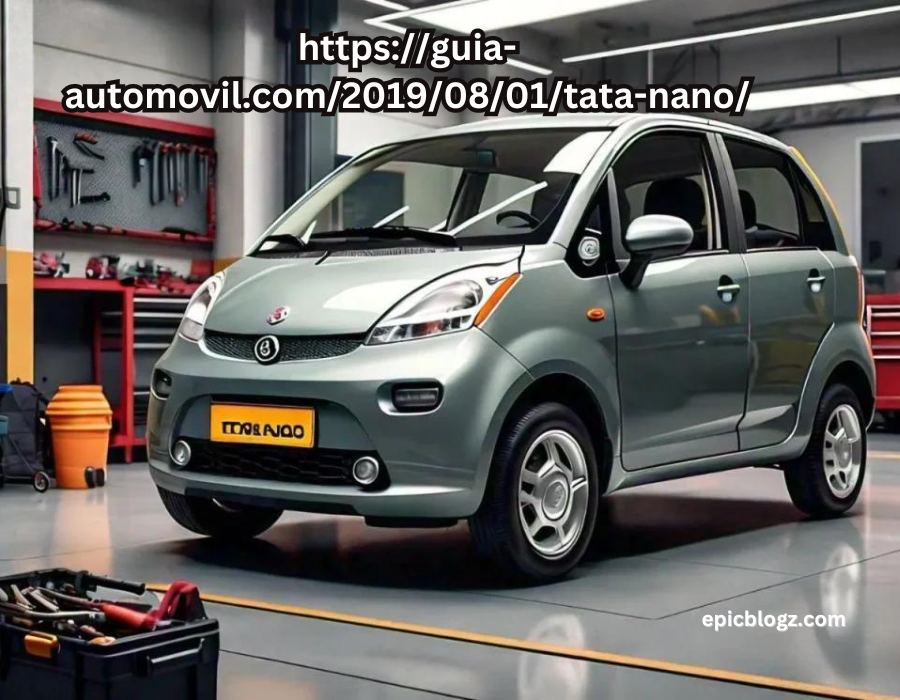Introduction: https://guia-automovil.com/2019/08/01/tata-nano/
The automotive world has witnessed many innovations over the years, but few have sparked as much conversation as the Tata Nano(https://guia-automovil.com/2019/08/01/tata-nano/). Launched in 2008 by Tata Motors, the Nano was designed with a bold vision: to create the world’s cheapest car, making car ownership accessible to millions in India and beyond. Despite its ambitious goals, the Nano’s journey has been fraught with challenges and lessons. This article explores the history, features, impact, and legacy of the Tata Nano, highlighting its significance in the automotive landscape.
https://guia-automovil.com/2019/08/01/tata-nano/: Revolution in the Automotive Industry
The https://guia-automovil.com/2019/08/01/tata-nano/ was conceived as a solution to the transportation challenges faced by millions of families in India who relied on two-wheelers for their daily commute. Ratan Tata, the then-chairman of Tata Group, envisioned a safe and affordable vehicle that would provide a comfortable alternative to motorcycles. With a launch price of just ₹100,000 (approximately $2,500), the Nano aimed to democratize car ownership in a country where the average family income was modest.
The Concept Behind Tata Nano
1. Visionary Leadership
The Tata Nano project was born out of a visionary commitment to provide affordable mobility. Ratan Tata‘s desire to create a low-cost vehicle was driven by the need to improve the quality of life for millions of families who could not afford traditional cars. His vision was not just about selling cars; it was about transforming lives.
2. Design and Development
The design and development of the Tata Nano were spearheaded by a dedicated team at Tata Motors. The goal was to create a compact, lightweight vehicle that could be produced at a significantly lower cost than conventional cars. This led to innovative engineering solutions and cost-cutting measures throughout the development process.
- Innovative Design Features: The Nano featured a unique design that included a rear-mounted engine, a lightweight body, and a simple interior. The car was stripped of non-essential features, such as a passenger-side mirror and a fuel tank filler cap, to keep costs down.
- Economies of Scale: Tata Motors aimed to achieve economies of scale by producing the Nano in large quantities. This strategy was intended to lower production costs further and increase affordability.
3. Key Features
The Tata Nano was designed with several key features that set it apart from other vehicles in its class:
- Compact Size: The Nano’s small footprint made it easy to maneuver in crowded urban environments, making it an ideal choice for city dwellers.
- Fuel Efficiency: The car boasted impressive fuel efficiency, making it an economical choice for daily commuting. The Nano was designed to deliver approximately 23.6 km/l (56 mpg) under standard driving conditions.
- Safety Features: Despite its low cost, the Nano included essential safety features, such as a reinforced body structure and a crash-tested design. It was built to comply with Indian safety standards.
- Affordability: Priced at approximately $2,000 at launch, the Nano was marketed as the world’s cheapest car, making it accessible to a broader audience.
The Launch of Tata Nano
1. Marketing Strategy
The launch of the Tata Nano in 2008 was accompanied by an extensive marketing campaign that highlighted its affordability and practicality. The tagline “The People’s Car” resonated with consumers, positioning the Nano as a vehicle for the masses. The car was unveiled at the 2008 Auto Expo in New Delhi, generating significant media attention and excitement.
2. Initial Reception
Upon its launch, the Tata Nano generated significant media attention and excitement. Many viewed it as a groundbreaking achievement in automotive engineering, and initial sales figures reflected this enthusiasm. However, the excitement was short-lived as various challenges began to surface.
Challenges Faced by Tata Nano
1. Production Issues
The production of the Tata Nano faced several challenges, including supply chain disruptions and quality control issues. These problems led to delays in delivery and impacted customer satisfaction. The initial manufacturing plant in Singur, West Bengal, faced protests and political challenges, forcing Tata Motors to relocate production to Sanand, Gujarat.
2. Safety Concerns
In 2009, reports of Tata Nano catching fire raised serious safety concerns. Although the company addressed these issues and implemented safety improvements, the negative publicity affected consumer confidence. The perception that the Nano was unsafe and lacked quality due to aggressive cost-cutting measures contributed to its decline in popularity.
3. Market Positioning
The Nano‘s positioning as the “world’s cheapest car” became a double-edged sword. While it attracted budget-conscious consumers, it also led to perceptions of the vehicle being low-quality or undesirable. This stigma hindered its appeal to potential buyers who were looking for a reliable and respectable vehicle.
4. Competition
As the automotive market evolved, competition intensified. Other manufacturers began to introduce affordable vehicles with better features and safety ratings, further challenging the Nano’s market position. The emergence of new models from competitors such as Maruti Suzuki and Hyundai made it difficult for the Nano to maintain its market share.
The Legacy of Tata Nano
1. Impact on the Automotive Industry
Despite its struggles, the Tata Nano left an indelible mark on the automotive industry. It challenged conventional notions of affordability and pushed manufacturers to explore innovative solutions for cost-effective vehicle production. The Nano’s introduction prompted other automakers to consider developing low-cost models to capture the growing market of first-time car buyers.
2. Lessons Learned
The journey of the Tata Nano offers valuable lessons for automotive manufacturers and entrepreneurs:
- Understanding Market Needs: It’s crucial to align product offerings with consumer expectations and perceptions. The Nano’s marketing strategy failed to resonate with many potential buyers.
- Quality Assurance: Maintaining high-quality standards is essential, especially when introducing a new vehicle to the market. The Nano’s reputation suffered due to safety concerns and perceived quality issues.
- Brand Positioning: How a product is positioned can significantly impact its reception and long-term success. The Nano’s branding as the “cheapest car” limited its appeal to a broader audience.
3. Cultural Significance
The Tata Nano became a symbol of aspiration for many in India. It represented the dream of car ownership for families who had previously relied on two-wheelers. The Nano’s story continues to inspire discussions about affordability, innovation, and the future of mobility.
Conclusion: The Enduring Spirit of Tata Nano
The https://guia-automovil.com/2019/08/01/tata-nano/ journey is a testament to the complexities of the automotive industry and the challenges of introducing a revolutionary product. While it faced numerous obstacles, the Nano’s vision of affordable mobility for the masses remains relevant today. As we navigate the future of transportation, the lessons learned from the Tata Nano will continue to influence how we approach vehicle design, production, and marketing. The Tata Nano may not have achieved the commercial success initially envisioned, but it undoubtedly changed the conversation around affordable cars and left a lasting legacy in the automotive world.
FAQs
What is the Tata Nano?
Tata Motors launched the Tata Nano in 2008 as the world’s cheapest car, aiming to provide affordable transportation for families in India.
Why did the Tata Nano face challenges?
The Tata Nano faced challenges due to production issues, safety concerns, market positioning as the “cheapest car,” and increased competition from other manufacturers.
What were the key features of the Tata Nano?
Key features of the Tata Nano included its compact size, fuel efficiency, basic safety features, and an affordable price point.
What lessons can be learned from the Tata Nano’s journey?
Lessons from the Tata Nano’s journey include the importance of understanding market needs, ensuring quality assurance, and effective brand positioning.
Is the Tata Nano still in production?
As of now, the Tata Nano is no longer in production. Tata Motors discontinued the Nano in 2018 due to declining sales and market challenges.
The Tata Nano’s story continues to be a fascinating chapter in the evolution of the automotive industry, reminding us of the complexities and aspirations that drive innovation in transportation.







